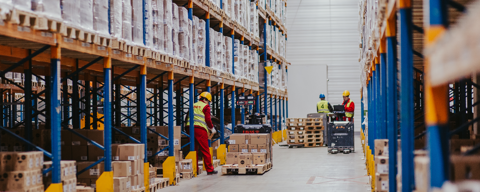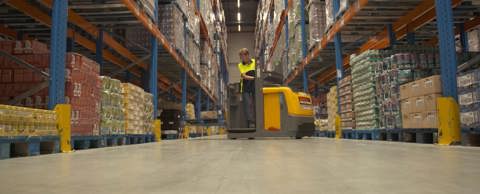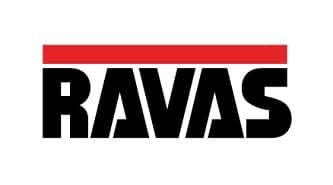The rise of mobile weighing technology
The demand for a mobile weighing solution in the industry and in logistics is increasing rapidly. This shows that mobile weighing is on the rise. However, many companies are still at the beginning of this journey. In many warehouses today, traditional scales are still strategically placed to weigh incoming and outgoing goods. It would be a missed opportunity not to use mobile weighing technology here.
Weighing in the flow
Without going into technical details: mobile weighing technology allows your pallet trucks, warehouse trucks and forklift trucks to weigh in the flow of the process. Incidentally, it is good to know that it does not matter if you buy new trucks and pallet trucks or if you want to upgrade your current equipment. Both options are possible. Mobile weighing technology can be fitted to all makes and models of pallet trucks and trucks.
Two mobile weighing technologies
Depending on your needs and the type of truck, two different weighing technologies are available: weighing via load cells and hydraulic weighing. We explain the differences and applications in this blog. The resemblance? The weighing system is connected to a display in or on the pallet trucks and trucks. This allows your employees to see at a glance what the lifted weight is. This facilitates the processes in and around your warehouse in many ways.
Weighing via load cells
Load cells are the most common and basic type of weighing technology. Think of load cells as mini scales built into hand pallet trucks, warehouse trucks and forklift trucks. The original forks are replaced by weighing forks. The number of installed load cells depends on your pallet truck, the truck and its purpose. The methodology is the same: the load cells pick up the weight and transmit it to the display.
Weighing carriage plates
Weighing technology via load cells also includes the system of weighing carriage plates. This highly accurate technology is only suitable for forklift trucks. With this technique, no new forks are mounted to the trucks, but a large carriage plate is placed on the front of the forklift truck. Load cells are incorporated in this carriage plate. The forks are attached to the carriage plate. It is the downward pressure that determines the weight of the goods on the weighing forks.
Legal for trade
This robust weighing system is used in the recycling and waste sector, among others, but is also emerging in logistics. Not only because it is a solid and reliable product, but also because this system is legal for trade. This allows for weight-based billing. Another advantage: the weighing carriage plates allow work to be done in combination with attachments such as rotators and clamps.
Hydraulic weighing system
Then there is hydraulic weighing technology. This is ideal for forklift trucks. The hydraulic weighing system is connected to the truck's hydraulic system; the hydraulic working pressure in the lifting cylinders determines the weight. It is a robust and stable weighing system that is not sensitive to impact forces. Although it is an accurate system, it is less accurate than load cell weighing technology. The weighing capacity of a hydraulic system is high, so it is suitable for heavier loads.

In conclusion, load cell technology is used in hand pallet trucks and warehouse trucks. Forklift trucks can be turned into scales via load cells, whether or not incorporated in a weighing carriage plate, and via a hydraulic system. All of these technologies can be used for weighing and data transmission. How differentiated you want to be able to weigh depends on your industry and goals.
What happens to the weighing data?
All weighing data is clearly shared with your employees via the display. Within both technologies, the weighing forks of your pallets and trucks communicate with the display via cable, or wireless connectivity. Of course, your business activities have been taken into account. Whether you want to cross-dock, order pick, count, mix or dose; you get a display to match your activities. This gives you the computing power to match your application and weighing needs.
Order picking at its best
Finally, a concrete example of order picking with an order picker truck to clarify the technology behind mobile weighing. The checking of the weight of the picked goods takes place directly at the picking location via a check with the ERP or WMS system. Employees are immediately notified whether the weight of the picked goods corresponds to the correct product and the correct number known in the system. With a traditional scale, an error would only become visible at the final inspection or it would even go unnoticed. Via a mobile weighing system, your employees can correct any errors immediately. This ensures your optimal flow!
Did this blog make you curious about how to choose the ideal weighing system based on your needs? You will read more about this soon.
Three examples of Mobile Weighing Solutions
Learn how other companies are saving time, money and space by using innovative mobile weighing systems.

Raben: order picking with two weighing systems

Frit Ravich prevents loss of raw materials

Kuehne+Nagel chooses Pick by Weight for supply chain optimization



